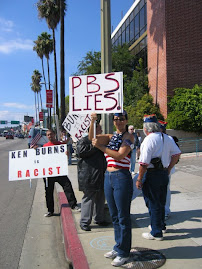Back then Dad worked as an electronic assembler for aerospace subcontractors (Rentech and TIC) around Northridge and Mom at the plants of Stokely’s Frozen Foods and la Chileria in Chiques. Hence, my family was working-class; privileged enough always to have a decent car, used and later new; always a Chevy, until later in our lives. Since my parents earned modest wages, my Dad serviced our autos’ maintenance (tune-ups, breaks, oil changes, and sometimes tires) and repairs that entailed timing belts, fuel and water pumps, axel universal joints, gasket replacements, and complete engine overhauls. Like a surgical nurse, for as long as I can remember I handed him different screwdrivers (Phillips and flathead), pliers, held a shop light, and took hold tired parts and gave him new replacements when he worked on our cars. In the process, I learned the components of cars and fractions concerning imperial-sized sockets and wrenches, open and box end—1/2 inch, 9/16, ¾ , 5/8....
(1958 Chevy Super Sport Impala, image courtesy of the internet)
On one occasion, fuel streamed down as he lay on a creeper underneath our 1969 Chevelle. Stunned, I just watched. Then he barked, “Frankie, get me a pan! Hurry!” I did. Then he angrily said, “You’d watch a person die and not do anything.” I was hurt. But he was right. This taught me to take the initiative when someone needed immediate help. Just don’t stand there like an idiot.
(Me and Dad, Frank H. Barajas, changing the breaks of our 1958 Chevy Super Sport Impala)
I remember that more than once my dad heroically worked on one of our two cars late into a weeknight to make it ready for the next day to drive to work in Northridge. I assisted him before he sent me to sleep on school nights. He did not complain; he just did what he needed to do. He found a way to repair not only cars but also most things around the house. So, he gave a household utilities problem a shot before calling a plumber or electrician, which was rare.
I also accompanied dad to (Johnny) Barbers Auto Parts on Oxnard Blvd. Before computers, men behind the counter—and they were always men—referenced humungous, auto parts catalogs after you told them what you needed and the year, make, model, and engine size of your car, in that order. I learned that you could get a discount on auto parts if you mentioned a fictitious repair shop you supposedly worked for or a core rebate for a failing battery, alternator, or water pump; not much money but enough to gain customer loyalty and incentivize pepper tree mechanics to trade in their carbon-incrusted, scrap parts. And sometimes, my dad and I went to wrecking yards to scavenge parts from cars in rows and on blocks before they were flattened to be loaded onto semi-trailers for recycling. Junkyards, and there were several in the commercial district of Oxnard back in the 1970s, not only reeked of old, dirty oil but it was smudged everywhere…the ground, the clothes and overalls of workers, faces, and desk counters.
Oddly, I kind of liked the smell of a junkyard.
When I was 15, my dad taught me to drive on our 1958 Chevy Apache pickup at a place called the Mushroom plant off Arnold Road in the outskirts of town. We also had the frost green Chevelle (which was our first brand-new car) at the same time. But it was an automatic; Dad said I needed to learn to drive on “the Apache” because it had a manual transmission; a three-speed column shift with a 365, straight six, engine. This way I would know how to drive a vehicle with a stick shift or an automatic transmission. Dad was patient as the car bucked and stalled because I did not smoothly synchronize the letting out of the truck’s clutch while pressing the accelerator. I may have gnashed the gears a couple of times. But it took me a short time before I got the hang of shifting gears between first, second, third, and in reverse as dirt bike motorcycles whizzed by. I recall this being my only lesson. After that, I was on my own, out and about the streets and roads of a much more agricultural Oxnard. For example, back then Victoria and Rose Avenue were the boondocks of the city. Not no more.
(1958 Chevy Apache, image courtesy of the internet)
From the age of 15 to 33, I drove stick shift cars as my Mom (Ramona P. Barajas) and Dad gifted me their 1978 Datsun 280z2+2 when I graduated from Oxnard High School in 1983. It was the bomb sports car back then. Well, at least for a working-class Mexican American like me. I drove it for two years to commute to Moorpark College from Oxnard. During this time, I also journeyed often to visit my compadre, Salud, at UC Santa Barbara.
(1978 Datsun 280z 2+2 similar to the one owned, image courtesy of the internet)
After I transferred to California State University, Fresno in 1985, the Z and I ventured in and out of the San Joaquin Valley. The Apache later joined us in Fresno and back home. When I needed to change brake pads, replace water hoses, pull out a transmission, change a radiator, and perform other basic car fixes, my dad was always there to advise and save me when I got in a mechanical jam, and otherwise. Therefore, when I faced auto and home breakdowns, Dad was my go-to YouTube answer person. And he still is.
(Frank H. and Frank P. Barajas (me on the left in case you are wondering), January 2024)
C/S
fpb







